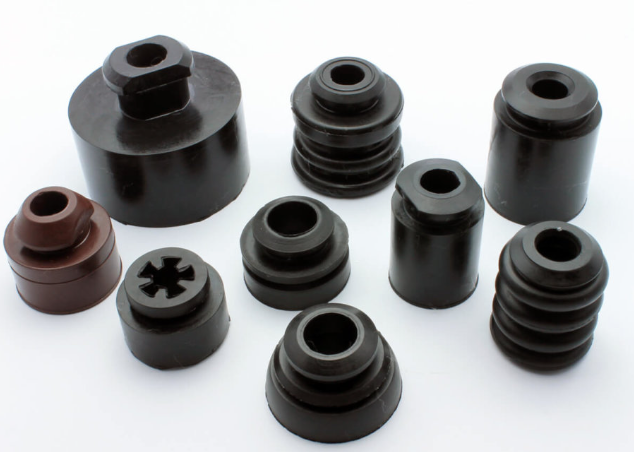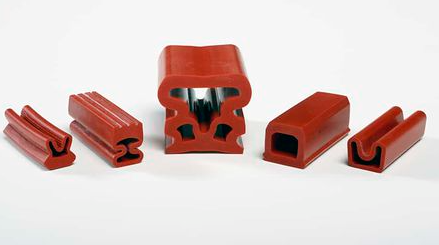Yes, elastomers can be extruded and are widely used in various industries for producing flexible, durable, and versatile products.
Types of Elastomers Suitable for Extrusion
The process of extruding elastomers, a versatile and adaptable material class, plays a pivotal role in various industrial applications. Understanding the types of elastomers suitable for extrusion is essential for achieving the desired properties and applications.

Natural Rubber Elastomers
Natural rubber, primarily obtained from the latex of rubber trees, stands out for its impressive elasticity and resilience. It is a staple in industries requiring high tensile strength and tear resistance. In the context of extrusion, natural rubber is particularly valued for its ability to withstand large deformations and return to its original shape. Key applications include automotive tires, seals, and hoses, where the rubber’s inherent properties are essential for both performance and safety.
Synthetic Rubber Elastomers
Synthetic rubber encompasses a broad range of elastomers engineered to exhibit specific properties. Notable types include:
- Styrene-Butadiene Rubber (SBR): Known for its good abrasion resistance and aging stability, SBR is commonly used in automotive tires, where these qualities are essential.
- Nitrile Rubber (NBR): This type is distinguished by its excellent resistance to oils, fuels, and other chemicals, making it an ideal choice for gaskets, hoses, and o-rings in the automotive and aerospace industries.
- Ethylene Propylene Diene Monomer (EPDM): EPDM’s resistance to weathering, UV, and ozone, coupled with its thermal stability, makes it suitable for outdoor applications, including roofing membranes and vehicle weather stripping.
Each synthetic rubber variant offers unique benefits in terms of cost, durability, and performance characteristics, allowing for a tailored approach to meet specific industrial requirements.
Thermoplastic Elastomers (TPEs)
Thermoplastic Elastomers represent a class of copolymers or a physical mix of polymers that exhibit both thermoplastic and elastomeric properties. TPEs combine the processing advantages of plastics with the flexibility and elasticity of rubbers. Types of TPEs include:
- Styrenic Block Copolymers (SBCs): These are known for their ease of processing and high elasticity, making them ideal for applications like shoe soles and adhesives.
- Thermoplastic Polyurethanes (TPU): TPUs are valued for their excellent abrasion resistance and mechanical properties. They find extensive use in applications ranging from automotive parts to medical devices.
- Thermoplastic Vulcanizates (TPV): TPVs are renowned for their high-temperature resistance and durability, commonly used in automotive seals and industrial hoses.
Extrusion Techniques for Elastomers
Elastomer extrusion, a critical manufacturing process, involves shaping elastomeric materials into specific profiles by forcing them through a die. This process is widely used due to its ability to produce continuous lengths of rubber or plastic products with uniform cross-sections.
Hot Extrusion Process for Elastomers
Hot extrusion is a prevalent method for processing elastomers, particularly when dealing with thermoset materials like natural rubber or certain synthetic rubbers. In this process, the elastomer, preheated to a specific temperature, is pushed through an extrusion die. This method allows the material to flow more easily, facilitating the formation of complex shapes.
Key advantages of hot extrusion include its high speed and efficiency in production. It enables the creation of products with intricate designs and consistent quality. However, it requires precise temperature control to prevent material degradation. The cost implications mainly involve the energy consumption for maintaining high temperatures and the potential need for specialized extrusion machinery.
Cold Extrusion Techniques
Cold extrusion is another method, especially suited for thermoplastic elastomers. Unlike hot extrusion, this technique does not involve preheating the material. Instead, it relies on high pressure to force the material through the die at room temperature. Cold extrusion is particularly beneficial for materials sensitive to heat or prone to degradation at higher temperatures.
This technique offers advantages in terms of reduced energy consumption and lower operational costs, as there’s no need for heating. It also minimizes the risk of thermal degradation of the material, ensuring higher product quality. However, the high pressures required can lead to increased wear and tear on machinery, potentially raising maintenance costs.
Co-Extrusion Possibilities with Elastomers
Co-extrusion combines two or more different types of elastomers or other materials into a single extrusion process to create a composite product. This technique is highly advantageous for producing parts that require different properties in different sections, such as varying flexibility, color, or chemical resistance.
Challenges and Solutions in Elastomer Extrusion
The extrusion of elastomers involves complex processes, each presenting unique challenges. Addressing these effectively is crucial for maintaining product quality and operational efficiency.
Temperature Control Challenges
Temperature control is a vital aspect of elastomer extrusion. Inappropriate temperature settings can lead to material degradation or inadequate forming. For instance, temperatures too high can cause premature vulcanization, while too low temperatures may not allow proper flow of the material.
Solution: Implementing advanced temperature control systems can help. These systems typically have a range of control within ±1°C, ensuring consistent material properties. Additionally, using infrared sensors to monitor and adjust temperatures in real time can maintain optimal processing conditions, significantly enhancing product quality.
Issues with Material Consistency and Quality
Inconsistent material quality can result in products with variable properties, affecting their performance and lifespan. Factors like impurities in the raw material, variations in the mix, or inconsistencies in the feed rate contribute to this issue.
Solution: Regular quality checks of raw materials and strict control over the mixing process are essential. Employing automated feeding systems can help maintain consistent feed rates, ensuring uniform material quality. For example, gravimetric feeders can maintain accuracy within 0.5% of the desired feed rate, greatly enhancing consistency.
Addressing Die Swell in Elastomer Extrusion
Die swell, the expansion of elastomers upon exiting the die, can lead to dimensional inaccuracies in the final product. This phenomenon is particularly challenging when precise dimensions are critical, such as in sealing applications.
Solution: Designing dies with die swell in mind is crucial. Simulation software can predict the extent of die swell for specific materials, allowing for die modifications accordingly. For example, a die designed with a 10-20% smaller opening than the desired product dimension can compensate for the anticipated swell. Furthermore, post-extrusion cooling methods, like water baths or air jets, can help stabilize the dimensions immediately after extrusion.

Applications of Extruded Elastomers
Extruded elastomers, owing to their versatile properties, find extensive applications across various industries. Their elasticity, durability, and resistance to environmental factors make them ideal for numerous practical uses.
Automotive and Aerospace Industry Uses
In the automotive and aerospace industries, extruded elastomers play a critical role. They are used in a range of applications, including:
- Seals and Gaskets: These components ensure leak-proof and airtight connections, crucial for vehicle and aircraft performance. The typical lifespan of these elastomer products ranges from 5 to 10 years, depending on the material and environmental exposure.
- Hoses and Tubes: Used for fluid transfer in engines and braking systems. They need to withstand high temperatures and pressures, with an operational temperature range usually between -40°C to 150°C.
- Vibration Dampeners: These are essential for reducing noise and vibration in vehicles and aircraft, improving comfort and structural integrity.
Medical Applications of Extruded Elastomers
In the medical field, the use of extruded elastomers has seen significant growth, particularly in:
Surgical Tubing and Catheters: They must be biocompatible and flexible, with silicone rubber being a preferred material due to its inert properties.
Custom Seals and Gaskets: Used in medical devices, these require precision manufacturing to ensure patient safety and device efficacy.
Consumer Products and Electronics
Consumer goods and electronics also benefit greatly from extruded elastomers:
Smartphone and Tablet Cases: These products demand materials that are both durable and flexible, with thermoplastic elastomers (TPEs) often being the material of choice for their excellent shock absorption qualities.
Wearable Devices: Elastomers in wearables need to be skin-friendly and resistant to sweat and UV light. Lifespan and material stability are key considerations, with most products designed to last several years under regular use.




